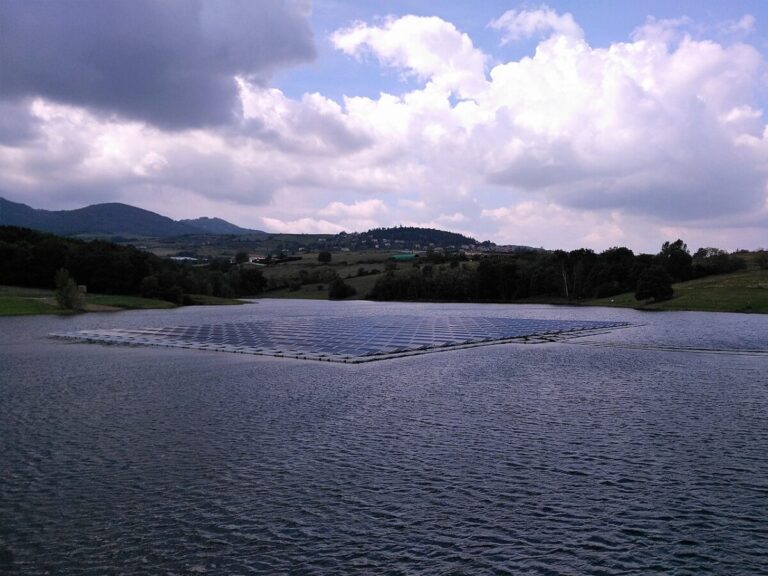A before-after-control-impact study conducted on six French lakes for three years has shown that the PV coverage on average reduces the water temperature by 1.2 ° C. The reduction of the water temperature also occurred in areas of the lakes that were not covered with modules.
Researchers from France have conducted an investigation into the impact of floating PV (FPV) stations at water temperature in freshwater ecosystems. They have used a before-after-control impact (BACI) framework to understand those differences.
The team has measured six comparable lakes, three of them with FPV and three without, for a period of three years.
“Although the effects of FPVs on the water temperature are one of the most studied effects of this emerging technology, most empirical research is mainly focused on small -scale pilot installations and short -term observations, which greatly limits the robustness of our knowledge,” they said.
“FPV energy plants are becoming a striking part of the landscape and to date in the long term empirical assessments on the ecosystem scale of the global effects of FPVs on the temperature of the lake, with robust experimental designs, are still missing.”
This study was conducted from December 2020 to December 2023 in Six Close Gravel Pit Lakes in the Floodplain of Garonne River, Southwest France. Temperature measurements were taken via buoys attached to a berth with lumberjacks used to a depth of four meters. About a year after collecting data, FPV was installed in three lakes, making one possible before an analysis.
FPV energy plants covered 40.3%, 51.5%and 55.5%of the lakes, with an average coverage of 49.1%. Each FPV covered more, or “impact” Lake, was linked to a “control” lake without FPV. They were linked on the basis of their hydromorphological agreements, determined using a principal component analysis (PCA) performed on environmental parameters. Those environmental parameters were surface-to-volume ratio, maximum depth, perimeter and height.
According to the results, before FPV installation, the water temperature amounted to an average of 15 C and 15.3 ° C in the FPV and non-FPV lakes respectively; While after installation they were on average 16.9 C and 18.1 C.
“In general, the presence of FPV energy center reduced the water temperature by 1.2 ° C compared to lakes without FPV energy plant,” the academics emphasized.
This temperature reduction changed considerably between seasons. An average difference of 2.3 C between the control and the impact lakes was registered in the spring, while in the summer the average reduction was 1.9 C. The reduction was much lower in winter and autumn, with only 0.6 ° C average difference.
“On average, a reduction in the water temperature of 0.08 ° C between FPV and non-FPV lakes was observed when the air temperature increased by 1 C. When the average daily air temperature was <10 ° C, the predicted reduction in the water temperature was very limited ( <0,5 c). Wanneer de gemiddelde dagelijkse luchttemperatuur> 30 ° C was, the reduction of the water temperature> 2 C. reached the highest differences in water temperature> 3 ° C, ”she added. “In lakes that contain FPV energy plants, the water temperature differed in the area covered with FPV did not significantly from the water temperature measured in the uncovered area.”
When closing their research, the team added that “in the context of climate heating, a falling water temperature in the summer could benefit C -cycle), including greenhouse gas emissions. That is why the step -by -step effects of FPV on freshwater biodiversity and the functioning of the ecosystem must still be assessed. “
The results were presented in “Floating photovoltaisies strongly lower the water temperature: an experiment with a whole lakePublished in the Journal of Environmental Management. Scientists from the French University of Toulouse and Claude Bernard University Lyon 1 have conducted the study.
This content is protected by copyright and may not be reused. If you want to work with us and reuse part of our content, please contact: editors@pv-magazine.com.


